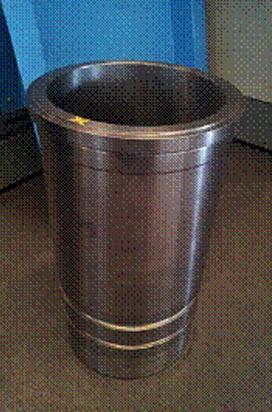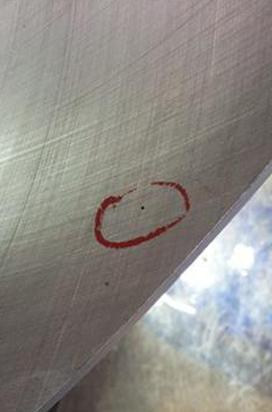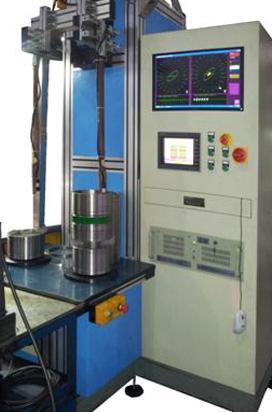
1. Test object: inner diameter and outer diameter of the cylinder liner
2. Standard defective parts: a flat bottom hole with a depth of 0.5 mm and a diameter of 0.5 mm extending from the surface of the workpiece to the metal.
3. The rate of missed standard defect is 0%; the rate of false positives (only misidentified products are judged as non-conforming products) is ≤1%.



Eddy current testing is to connect the conductor to the coil with alternating current. The alternating magnetic field is established by the coil. The alternating magnetic field passes through the conductor and electromagnetic induction is applied to establish an eddy current in the conductor.
The eddy currents in the conductor also generate their own magnetic field, and the action of the eddy current magnetic field changes the strength of the original magnetic field, which in turn causes a change in the coil voltage and impedance.
When a defect occurs on the surface or near the surface of the conductor, the intensity and distribution of the eddy current will be affected. The change in the eddy current causes a change in the voltage and impedance of the detecting coil. According to this change, the existence of the defect in the conductor can be indirectly known.
Since the shape of the test piece is different and the detection position is different, the shape of the test coil is different from that of the test piece. In order to meet various testing needs, various detection coils and eddy current testing equipment have been designed.
1. detection coil and its classification
In eddy current testing, the detection coil is used to establish an alternating magnetic field; the energy is transmitted to the conductor to be inspected, and the alternating magnetic field established by the eddy current is used to obtain the quality information in the detected conductor. Therefore, the eddy current coil serves as a transducer.
The shape, size and technical parameters of the test coil are critical to the final inspection. In eddy current testing, the type of detection coil is often selected according to the shape, size, material, and quality requirements (testing standards) to be detected. There are three types of commonly used detection coils.
1) Through coil
The through the coil is an eddy current coil that detects the sample to be tested and is put in the coil and is suitable for flaw detection of tubes, rods, and wires. Since the magnetic field generated by the coil acts first on the outer wall of the sample, the effect of detecting the outer wall defect is good, and the detection of the inner wall defect is performed by the penetration. In general, the detection sensitivity of the inner wall defect is lower than that of the outer wall. The drawback of thick-walled tubing is that it cannot be detected using an externally wound coil.
2) Interpolated coil
The interposer coil is a coil placed inside the tube for inspection. It is used to inspect the defects of thick walls or the inner walls of the borehole. It is also used to check the quality of the tubes in the complete equipment, such as the in-service inspection of heat exchanger tubes.
3) Probe coil
The probe coil is a type of eddy current coil placed on the surface of the sample for inspection. It is suitable for surface scanning inspections of simple shapes like plates, slabs, billets, round billets, bars, and large-diameter pipes, as well as for complex-shaped mechanical parts. Compared to the through coil, the probe coil, due to its smaller size and smaller field action range, is particularly well-suited for detecting small surface defects.
Leave us Message:

